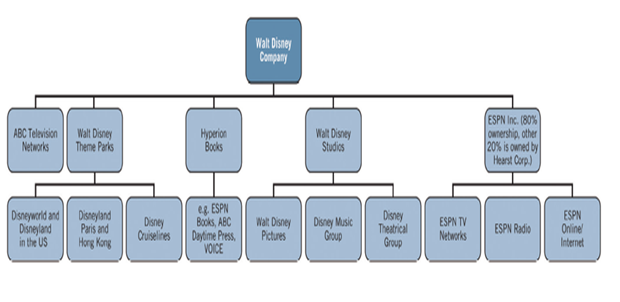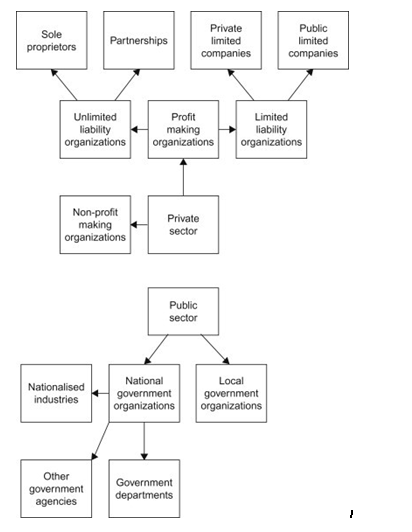Are you a student struggling to understand OTHM unit ref: A/650/1159 business environment for tourism and hospitality assignment? Here is an assignment solution that will guide you in completing future assignments.
Contents
- 1 Assignment Brief
- 2 Assignment Solution for Task One
- 3 Assignment Brief for Task Two
- 4 Assignment Solution for TASK TWO
Assignment Brief
“To indicate your level of understanding of the tourism and hospitality business environment you are to produce a report consisting of two parts, as follows.
Part A
- explain the role of one public sector organization in the tourism and hospitality industry.
- describe the characteristics of the public sector organisation.
- describe the challenges faced by this public sector organisation.
Part B
- explain the role of one private sector organization in the tourism and hospitality industry.
- describe the characteristics of the private sector organisation.
- evaluate the role of entrepreneurship in tourism and hospitality businesses.
Additional Guidance:
Below are examples of public and private sector organisations that you can use as part of your research:
Public-sector organisations,-local authorities:-national governments:-national and regional touristboards, both in the UK and overseas:-Tourist Information Centres:-English Heritage:
-UNESCO(United Nations Educational, Scientific and Cultural Organisation):
Private-sector organisations : – hotel developers: – landowners: – development companies: – consultancies: – sponsors: – leisure organisations: – retail: – entertainment organisations” (Source: OTHM Qualification, 2022)
Assignment Solution for Task One
United Nations Educational, Scientific and Cultural Organization (UNESCO)
UNESCO is the United Nations Educational, Scientific and Cultural Organisation, which was founded in 1945 with the mission of promoting international cooperation in education, science, culture and communication. UNESCO has 194-member states and 11 associate members and operates through a network of field offices, institutes, centres and commissions. Founded in 1945 as a successor to the League of Nations International Committee on Intellectual Cooperation, which was established in 1921, UNESCO’s constitution, which entered into force in 1946, states that its mission is to encourage countries to work together for peace and security by educating and sharing knowledge about science and culture(Ehm and Walter, 2015). It also seeks to make sure that justice, the rule of law, human rights, and freedom are respected by everyone.
Characteristics
UNESCO is a part of the United Nations and it works in five main areas education, natural sciences, social human sciences, culture, and communication information. It supports different projects and efforts to make the world better. These include helping people learn, giving them technical training and education, advancing science, protecting media and press freedom, preserving heritage, promoting different cultures, connecting people through technology, and creating societies that value everyone (Ehm and Walter, 2015). UNESCO also helps to find and safeguard places that are important to the whole world called World Heritage Sites, it helps to translate and share books and stories from all over the world, and it works to make sure that all countries agree on the best ways to do things.
The organization’s budget for 2020-2021 was about US$534 million. 74% of the money came from donations given voluntarily by member states and other donors (Liu, 2022). UNESCO’s job is to bring people together and work together in areas like education, science, culture, media, and information to make sure we all live peacefully and safely(Foster, 2015). They support the plan to make the world better by using science, technology, and new ideas to solve problems like climate change, loss of plants and animals, and managing water. UNESCO also supports social sciences and humanities by promoting fairness, equal rights, and the richness of different cultures.
Roles and challenges
UNESCO’s main goal is to promote peace, encourage dialogue, and enhance understanding between countries.remains the same. It helps the SDGs in the 2030 Agenda, which have goals for social, economic, and environmental development. UNESCO gives knowledge, help, supervision, and evaluation to achieve these goals.UNESCO is certifiably significant in tourism because it promotes amazing natural and cultural places, like World Heritage Sites, Biosphere Reserves, and Global Geoparks (Omolewa, 2007). These places attract lots of tourists every year. The group encourages responsible tourism, respecting the people who live in the area and preserving their customs and traditions(Foster, 2015). UNESCO also helps with studies and learning in the tourism and hotel businesses. They want everyone to be treated fairly, regardless of their gender, and they want to protect individual rights.
Middle-income countries have a hard time reaching their goals because they don’t have enough trustworthy information about things like education, science, culture, media, and information., the COVID-19 pandemic has affected schooling for more than 1.6 billion students in 190 countries and territories(Foster, 2015). UNESCO is doing a big job to make sure education doesn’t stop and to aid in recovery systems worldwide and has made tools to deal with problems like conspiracy theories and false information. They have made handbooks for journalists, videos, and toolkits for educators. It also safeguards people’s liberty to speak their minds and get information.
Mathematicians can provide assistance in addressing issues such as climate change, biodiversity loss, learning, and social justice. They do this by developing models, methods, and tools that can help make better decisions. UNESCO has many problems that are backed up by lots of information and evidence. To tackle these problems, UNESCO has used places where data is stored, reports, and guidelines, and worked with different governments, organizations, and people who have a stake in the issues. Overall, they have done a lot to try and solve these challenges.
The Walt Disney Corporation
Walt Disney Corporation is a big company that does lots of fun things like theme parks, resorts, cruises, and other travel stuff! It is considered the most intimate brand in the hotel and theme park business, with a focus on providing special experiences, loyalty programs, and nice features (Bohas, 2015). The company has special qualities that make it unique. It can use famous brands like Marvel, Star Wars, Pixar, and Disney Animation to make amazing and creative attractions. This company also spends a lot of money on technology and data to make customer service better, work more efficiently, and personalize experiences. The company’s tourism and hospitality business is divided into four parts: domestic parks and resorts, international parks and resorts, Disney Cruise Line, Disney Vacation Club, Adventures by Disney, Aulani, ESPN Wide World of Sports Complex, and Disney Springs (Figure 1).
In fiscal year 2019, the Parks, Experiences, and Products segment made US$ 26.2 billion in revenue and 6.8 billion in operating income. This segment covers consumer products, games, publishing, and licensing. The segment s revenue increased by 6 from fiscal year 2018. This was because more guests spent money and visited domestic parks and resorts. They also bought more merchandise from movies like Frozen, Toy Story, Star Wars, Avengers Endgame, and Aladdin. Additionally, the domestic hotels had more people staying, which contributed to the higher revenue (Wasko, 2016). Operating income increased by 9 in fiscal year 2018, but this growth was partly countered by increased expenses related to labour, technology investments, new guest offerings, depreciation expenses, pre-opening costs, and marketing expenses.
Role of entrepreneurship in tourism and hospitality businesses.
Leisure organizations are very important in the tourism and hospitality industry. They offer entertainment, activities, and relaxation for both tourists and locals (Tribe, 201). The options can consist ofsuch as sports clubs, wellness centres, amusement parks, nightclubs, and cultural attractions. In 2019, money spent on vacations and recreational travel made up 78.5% of the total money contributed to the Travel Tourism industry. On the other hand, money spent on work-related travel accounted for only 21.5% (Leung, 2021). Leisure organizations can benefit from the government’s strategy to boost local economies and focus on hospitality. An example of a practice is when Disneyland Paris installed solar panels and geothermal energy systems. Another example is Center Parcs UK, which made sure all of its five villages produce no carbon emissions.
Entrepreneurship plays a vital role in fostering new ideas and economic development in the tourism and hospitality sectors. It helps businesses to make special things and offer better customer service, which makes customers happy and loyal and gives the business an advantage in the market. Entrepreneurship helps generate new ideas and promotes thinking outside the box, which leads to the creation of jobs, money, and better conditions for everyone(Leung, 2021). It also encourages diversity and inclusivity and provides assistance to local areas and preserving their unique cultures. It also helps businesses in the tourism and hospitality industry to use sustainable practices, reduce harm to the environment, and protect natural and cultural resources.
Also read Services Marketing in Tourism and Hospitality Assignment Example
Bibliography
Bohas, A., 2015. Transnational firms and the knowledge structure: The case of the Walt Disney Company. Global Society, 29(1), pp.23-41.
Degterev, Denis. (2022). Value Sovereignty in the Era of Global Convergent Media. Vestnik RUDN. International Relations. 22. 352-371. 10.22363/2313-0660-2022-22-2-352-371.
Ehm, F. and Walter, C., 2015. UNESCO. In International Democracy Documents (pp. 133-147). Brill Nijhoff.
Foster, M.D., 2015. UNESCO on the Ground. Journal of Folklore Research: An International Journal of Folklore and Ethnomusicology, 52(2-3), pp.143-156.
Leung, R., 2021. Hospitality technology progress towards intelligent buildings: a perspective article. Tourism Review, 76(1), pp.69-73.
Liu, X., 2022, April. A Comparative Study on the Roles of the World Bank, the OECD and UNESCO in Global Education Policy Making. In 2022 International Conference on Creative Industry and Knowledge Economy (CIKE 2022) (pp. 539-543). Atlantis Press.
Omolewa, M., 2007. UNESCO as a Network. PaedagogicaHistorica, 43(2), pp.211-221.
Tribe, J. (2011). Recreation, leisure and tourism organizations. The Economics of Recreation, Leisure and Tourism, pp.27–49. doi: https://doi.org/10.1016/b978-0-08-089050-0.00002-x.
Wasko, J., 2001. Challenging Disney Myths. Journal of Communication Inquiry, 25(3), pp.237-257.
Wasko, J., 2016. The Walt Disney Company. In Global media giants (pp. 11-25). Routledge.
Appendix
Figure 1: Walt Disney Organizational Structure


Assignment Brief for Task Two
“You will first need to identify a tourism or hospitality business which is familiar to you, so that you are able to examine, through research, its strategies, practices, processes and/or outcomes. You can if you wish use the organisation you investigated in Task 1.
You will then need to conduct an internal and external analysis of the business’ operating environment through a two-part report as follows.
Part A
- Explain key factors that influence the internal environment of tourism and hospitality businesses.
- Explain why it is important to measure a business’s internal environment.
- Produce a SWOT analysis of the business.
- Using the SWOT analysis, assess the business’s internal environment. The assessment must be justified.
Part B
- Explain key factors in the external environment which influence tourism and hospitality businesses.
- Explain why it is important to measure a business’s external environment.
- Produce a PESTLE analysis based on the business’ operating environment.
- Using the PESTLE analysis, assess the business’ external environment. The assessment must be justified”. (Source: OTHM Qualification, 2022)
Assignment Solution for TASK TWO
Assessing the external environment of the Walt Disney Corporation
Internal environment of businesses
The internal environment of a tourism and hospitality business can be affected by various factors like employees, technology, how the business is organized, the overall attitude and behaviour of the people working there, how the leaders manage the organisation, and the knowledge and skills of the employees.By measuring these factors, a business can identify its strengths and weaknesses, as well as the opportunities and threats that arise from them (Hitt et al. 2001). Human resources, which cover activities like hiring, training, growth, keeping employees, and rewarding them, are extremely important for providing good services and promoting a positive work environment
Organizational structure defines how people work together, including job roles, decision-making authority, and information sharing. Leadership style and values have a significant impact on an organization’s culture, motivation levels, and ability to innovate and adapt to change. Technology can improve efficiency but also creates new challenges and risks. A company’s structure and communication can influence a company’s flexibility, responsiveness, and accountability (Pagell and Krausse, 2004).Culture also impacts the behaviour, attitudes, and performance of employees and customers. The same values, beliefs, norms, and habits of people working in the tourism and hospitality industries can influence their behaviour, thinking, and performance. SWOT analysis can help businesses evaluate their current status and develop future expansion plans.
A study by Barney and Wright in 1991 shows that businesses with scarce resources, difficult to copy, and good organization and capabilities can achieve sustainable competitive advantage and better performance. This is supported by a study of 113 companies in seven industries, which found that VRIO attributes accounted for 14 points of difference in profitability.Hitt et al. (2001) also found thatinternal environmental factors influence the choice of overall plans, plans for individual business units, international operations strategies, and decisions to merge with or acquire other companies.
SWOT analysis
In 1923, Walt Disney and his brother Roy O. created a company called The Walt Disney Corporation. Disney started off as a little animation studio. Today, there are five different parts of this organization: Media Networks, Parks and Resorts, The Walt Disney Studios, Disney Consumer Products, and Disney Interactive.
Strengths
The Walt Disney Company runs many different media networks like ABC, ESPN, Disney Channel, and National Geographic (Figure 1). They also make popular movies and TV shows using studios called Pixar, Marvel, and Lucasfilm. The company runs six theme parks and two water parks, whichmany people visit every year and these products help the company stand out from competitors and make a lot of money(Carillo et al., 2012).The Walt Disney Company is well-known for providing excellent products and services, family-friendly experiences, and caring for the community(Bohas, 2015). In 2022, it was placed at number 19 on the list of the most valuable brands worldwide, worth US $ 57.1 billion. The company has a lot of people who really like their products and services and use them in different ways.
The Walt Disney Company is really good at purchasing other companies that go well with what it already has, like Pixar in 2006, Marvel in 2009, and Lucasfilm in 2012. These purchases have helped the company become more creative and diverse in their collection, which has led to more money and expansion.The Walt Disney Company has many different businesses that serve different types of customers. This helps decrease its dependence on one market and takes advantage of the advantages of its various businesses. They use various platforms like media networks, theme parks, consumer products, and interactive media to advertise and promote their products and services.
Weaknesses
The Walt Disney Company depends a lot on North America, which contributes more than half of its revenue. This reliance on something is dangerous because it could be impacted by economic downturns, shifts in what consumers prefer, or changes to regulations. In addition, it restricts growth in other areas such as Asia Pacific, Europe, and Latin America, where there is a higher demand for entertainment and media products from a larger population(Bohas, 2015).Disney has a history of buying other companies successfully, but there are limits to how much they can do this. They may face competition in the market. In the future, it may be challenging or competitive to make purchases.
Opportunities
The Walt Disney Company can make use of the increasing need for entertainment and media products and services in developing countries such as China, India, and Brazil. The company can grow by creating new media networks, making more movies and TV shows, and building theme parks and resorts, thanks to people having more money and using the internet more.Additionally, the company can look for chances to make movies in countries where it is cheaper to produce them, where they can get special tax advantages, or where new talent is emerging(Carillo et al., 2012). This will help the company save money and make more profit. This way of doing things could result in making really special and cool things that people all around the world would like.
Threats
Walt Disney has many other companies competing with it in the entertainment and media industry. These companies include NBC Universal Media, News Corp., Time Warner Inc., Viacom Inc., Netflix Inc., Amazon.com Inc., and Apple Inc. These competitors might have more money, lower prices, or advanced technology, which can attract customers or reduce their market share and profits(Carillo et al., 2012). Piracy is becoming a big issue for Walt Disney because people are taking their movies, shows, and other creative works without asking or paying(Bohas, 2015). The problem is getting worse for them. Piracy happens for different reasons, like using digital platforms or having lax laws against it.
The Walt Disney Company is seeing a big rise in people renting TV shows and movies online, but they need to adjust to what customers want and do differently. As more and more people switch from watching traditional TV and movies to using online services, the company may lose customers who like using the internet for entertainment. In order to keep making money and stay competitive, Walt Disney needs to put more money into making its own websites or joining forces with ones that already exist.
External environment of tourism and hospitality businesses
The key factors that affect the external environment of tourism and hospitality organizations include political, economic, social, technological, ecological, and legal factors. They continue to impact the demand and supply of tourism services, while the stability and safety of a place also influence how appealing and easy it is for tourists to visit (Pagell and Karusse, 2004). Technological advancements like online booking sites, social media ads, smart computers, fingerprint scanning, virtual experiences, and secure digital records create new chances and difficulties for tourism and hospitality groups.Ecological and natural factors, like climate change, natural disasters, biodiversity loss, and environmental damage, have a big impact on how possible and responsible tourism and hospitality activities are. Legal factors, like rules, taxes, laws, and policies, can affect how these organizations work and how well they can compete with others.
Measuring a business’s external environment helps identify opportunities and threats, as well as the strengths and weaknesses of the organization and helps organizations create good marketing plans that match their goals and values, and measure how well these organizations are doing and what effect they have on different people involved (Shatl et al., 2018). This helps make things better, faster, more creative, environmentally friendly, and socially responsible. Measuring the outside world is also important to anticipate and reduce potential risks and challenges that may come from outside factors. This helps make the tourism and hospitality industry stronger, more adaptable, and more competitive in a constantly changing and complicated environment, whereis still unchanged.
PESTLE factors affecting Walt Disney Corporation
PESTLE, or political, economic, social, technological, legal and environmental factors, impact Walt Disney’s business environment. The company operates in many different countries and regions, exposing it to various political risks and regulations (Wasko, 2016). It must comply with local content quotas, censorship laws, trade policies, tax regimes and labour standards. In certain markets, such as China, Hong Kong, India and Latin America, they benefited from political support and encouragement.Economically, Walt Disney was affected by the economic situation of the global economy and consumer spending habits, based on disposable income(Carillo et al., 2012). And entertainment. It faces competition from other entertainment providers as well as the costs and risks of expanding its operations.
Socially, Walt Disney has a brand image and reputation strong, attracting many customers from different age groups, cultures and interests. However, it faces social challenges such as cultural appropriation, gender stereotypes, labour disputes, and human rights violations(Carillo et al., 2012).Technologically, Walt Disney is a leader in innovation and technology, using cutting-edge technologies to create immersive experiences. However, it faces technological threats such as cyber-attacks, data breaches, hacking, and intellectual property violations. Walt Disney must comply with the law of antitrust, privacy, consumer protection, intellectual property and the environment. The company also faces lawsuits and legal proceedings, which could damage the company’s reputation and financial performance, the organisation is also aware of its environmental impact and has taken measures to reduce carbon emissions and support environmental causes.
Bibliography
Barney, J.B. and Wright, P.M., 1998. On becoming a strategic partner: The role of human resources in gaining competitive advantage. Human Resource Management: Published in Cooperation with the School of Business Administration, The University of Michigan and in alliance with the Society of Human Resources Management, 37(1), pp.31-46.
Bohas, A., 2015. Transnational firms and the knowledge structure: The case of the Walt Disney Company. Global Society, 29(1), pp.23-41.
Carillo, C., Crumley, J., Thieringer, K. and Harrison, J.S., 2012. The Walt Disney Company: A Corporate Strategy Analysis.
Hitt, M.A., Bierman, L., Shimizu, K. and Kochhar, R., 2001. Direct and moderating effects of human capital on strategy and performance in professional service firms: A resource-based perspective. Academy of Management journal, 44(1), pp.13-28.
Pagell, M. and Krause, D.R., 2004. Re-exploring the relationship between flexibility and the external environment. Journal of Operations Management, 21(6), pp.629-649.
Shtal, T.V., Buriak, M.M., Amirbekuly, Y., Ukubassova, G.S., Kaskin, T.T. and Toiboldinova, Z.G., 2018. Methods of analysis of the external environment of business activities. RevistaEspacios, 39(12).
Wasko, J., 2001. Challenging Disney Myths. Journal of Communication Inquiry, 25(3), pp.237-257.
Wasko, J., 2016. The Walt Disney Company. In Global media giants (pp. 11-25). Routledge.
Place an order below to get help with writing OTHM tourism and hospitality management assignments from expert assignment writers online



